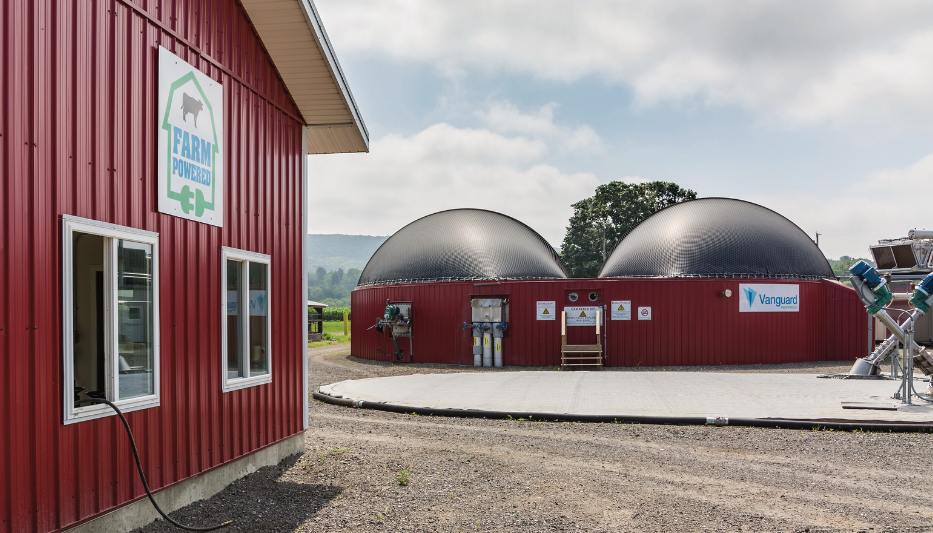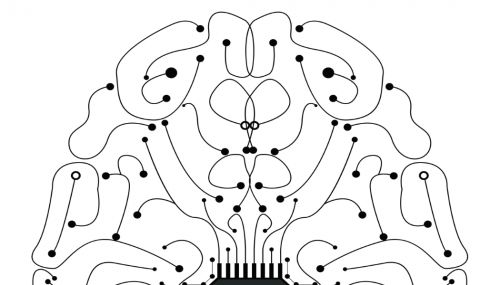All
Farm to Grid
by Ed Burke, Dennis K. Burke Inc.

Local dairy farmers in Massachusetts are now producing their own renewable energy.
The farms are using anaerobic digesters with a combined heat and power (CHP) energy system to supply all of the farm’s electricity use, help heat its water, and run the digester equipment while still enabling the farm to sell their renewable energy back to the grid.
This is in large part a result of the growing success of Massachusetts’ program to divert food waste from landfills, and an increasing interest from food companies to reduce their carbon footprint.
These farms waste nothing and reuse everything in the food supply chain for another purpose. The zero-waste, closed-loop anaerobic digester at the farm converts the energy potential from farm and food waste into electricity, heat and fertilizer.
Anaerobic digesters, built and operated by Vanguard Renewables, capture the methane emissions and turn it into renewable energy.
Vanguard Renewables’ “Farm Powered” co-digestion facilities provide the largest organics-recycling destination in the Northeast, processing nearly 200,000 tons per year of combined on-farm and off-farm organics.
Farm Waste
A fully-grown milking cow can produce upwards of 100 pounds of manure per day. Besides creating odors, carbon dioxide and methane are released during decomposition. Prior to using the digester, manure at the farm was stored in a huge slurry tank and spread on cropland as fertilizer. That changed when the farms began using the manure as feedstock for the new anaerobic digester with a CHP energy system.
Recycling Food Waste
Organic waste is the second highest component of landfills, and their largest source of methane emissions.
In 2014, Massachusetts implemented a ban on the disposal of commercial organic wastes by businesses and institutions that dispose of one ton or more of these materials per week. Instead of landfilling that waste, state law now says the waste must be recycled. Farm-based anaerobic digestion is a way that food waste producers can meet state mandates, contribute to renewable energy production, and help sustain family farms at the same time. The ban is part of the state’s plan to reduce its waste stream by 80 percent by 2050.
Massachusetts isn’t the only state trying to aggressively curb food waste. In the Northeast, Vermont and Connecticut along with New York City have similar bans.This has created an incentive for food businesses to participate in the waste-to-energy initiative. The dairy farmers receive tons of food waste from food manufacturers, processors, and users such as dairies, supermarkets, fast food restaurants and even breweries for recycling.
How Digesters Work
The process begins by gathering wasted food from around the state, including from many supermarket locations.
An industrial strength grinder gobbles up all types of food waste – everything from meat scraps to vegetables, grains, cooking fats and greases. The grinder turns all these bits into a slurry.
From here, the waste is loaded into trucks and sent to an anaerobic digester. Every day, the farms take in tons of food waste by the trailer load.
The farmers combine that food waste with tons of manure from the farm into a 600,000-gallon anaerobic digestion tank. The digesters use microorganisms in the tank to break down organic materials and convert sugars, fats and other compounds into biogas.
The mixture is heated at about 105 degrees Fahrenheit. As the biogas is released from the waste materials, it rises to the top of the digester tank with a bubble-shaped dome.
The biogas powers a large engine producing electrical and thermal energy. In addition, the dairy farmers can use the solids from the digestate for animal bedding and the liquid as an odor-free, organic fertilizer, lowering costs further and increasing overall crop yields.
As a sustainable waste management option, anaerobic digestion improves air and water quality, mitigates odors, and reduces farms’ greenhouse gas emissions.
Benefits of Recycling Food & Farm Waste
- Diverts tons of food waste — coming mainly from food processors, supermarkets, and large commercial feeders — from reaching landfills or incinerators
- Removes 85 percent of all the methane generated on the farm
- Produces tons of digestate organic liquid fertilizer, replacing chemical fertilizers and increasing corn and hay crop yields
- Enables the farm to sell their renewable energy back to the grid
- Allows the farms to provide renewable energy to food companies or local communities via net metering credits.
The anaerobic digestion projects will help farm owners to diversify their operations, providing them with additional revenue and helping to keep small-to medium-sized farms in business.
Collectively, the anaerobic digesters at the five dairy farms could handle up to about 15 percent of Massachusetts’ source-separated organics, using it to generate local, renewable energy.
Related Posts
 What’s Next in Boiler Technology
What’s Next in Boiler Technology
Posted on June 25, 2025
 Data Delivers!
Data Delivers!
Posted on April 28, 2025
 Harnessing Payment Data to Increase Profitability
Harnessing Payment Data to Increase Profitability
Posted on March 10, 2025
 DeepSeek Is Our AI Wake-Up Call
DeepSeek Is Our AI Wake-Up Call
Posted on March 10, 2025
Enter your email to receive important news and article updates.
